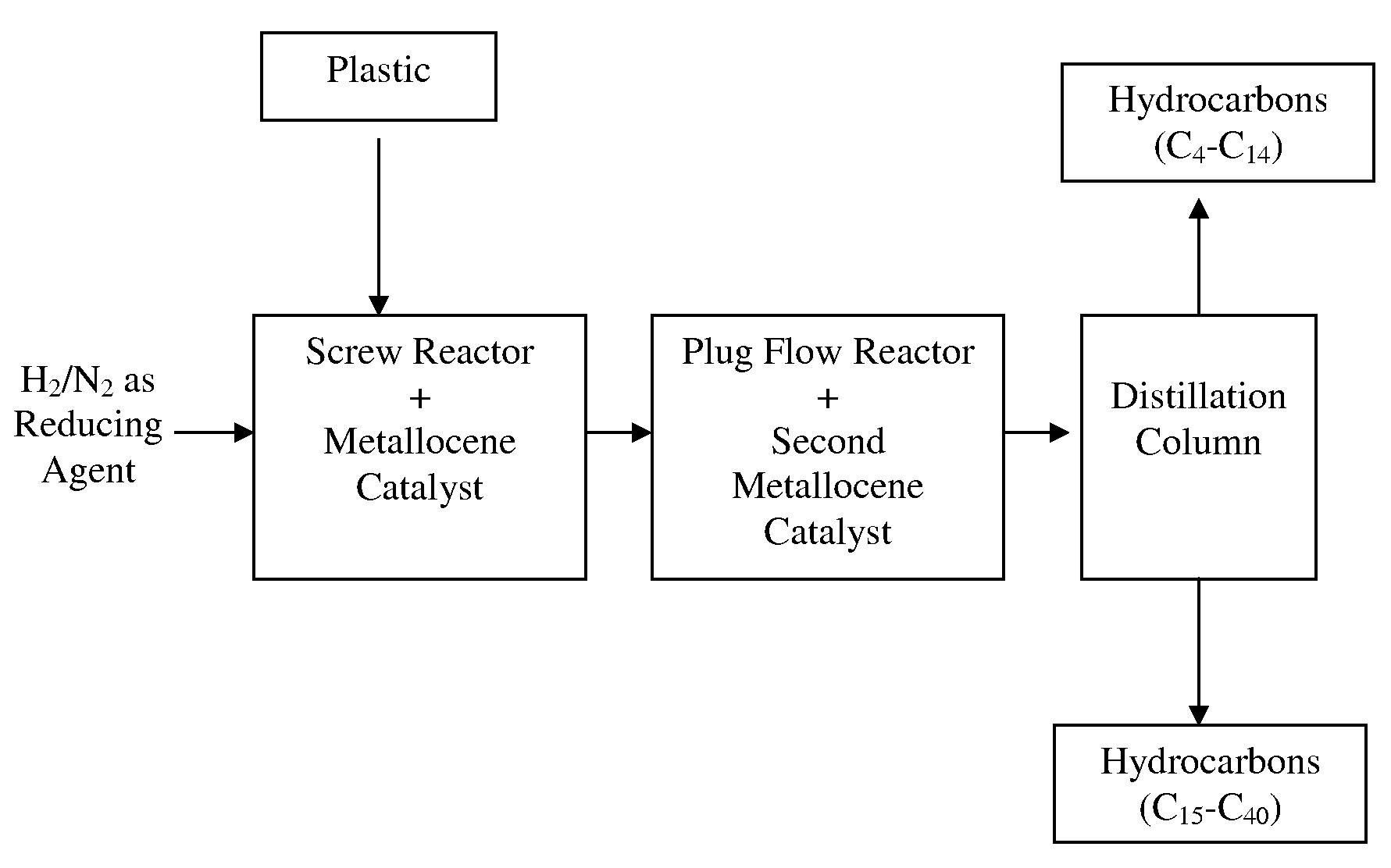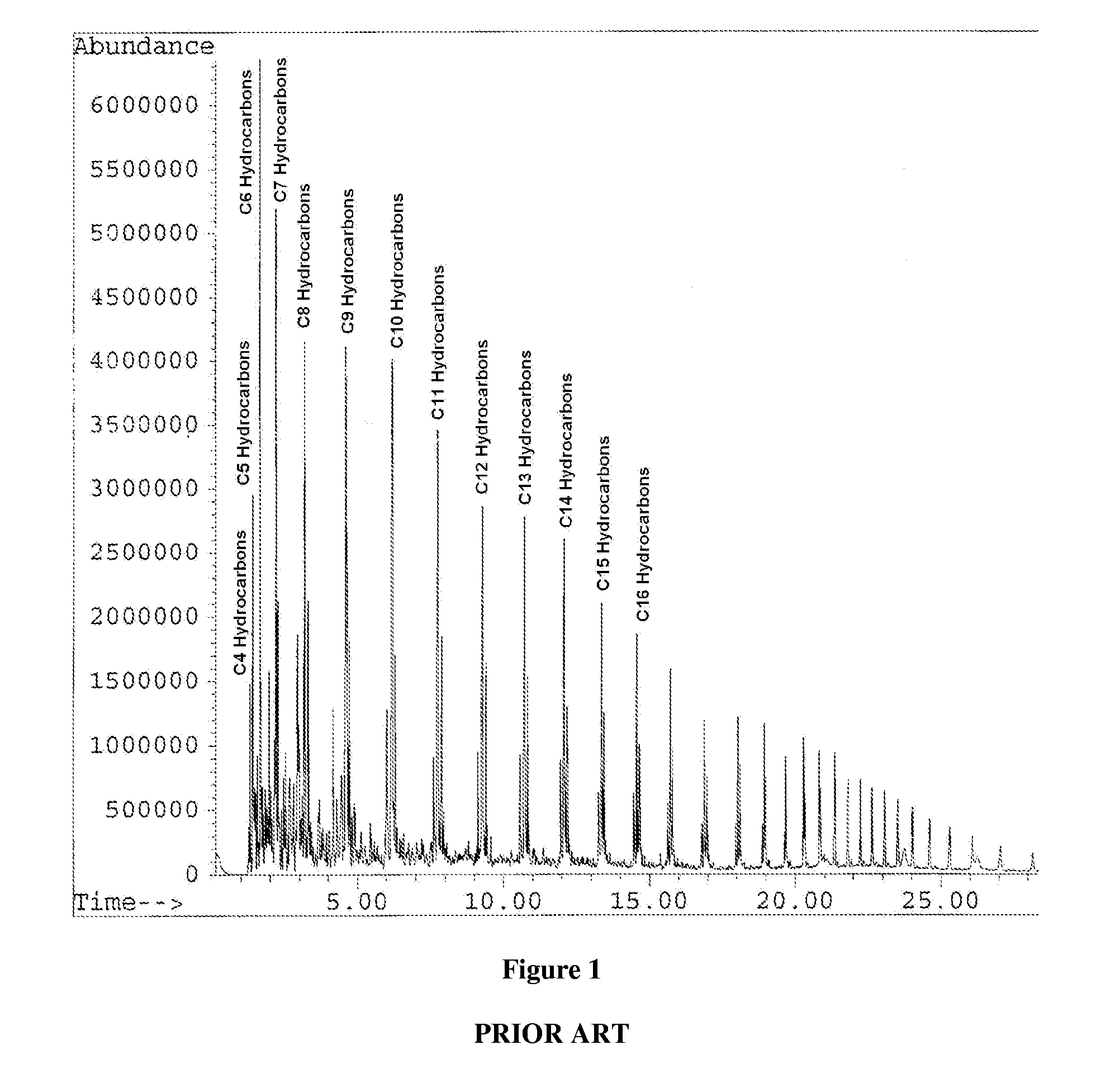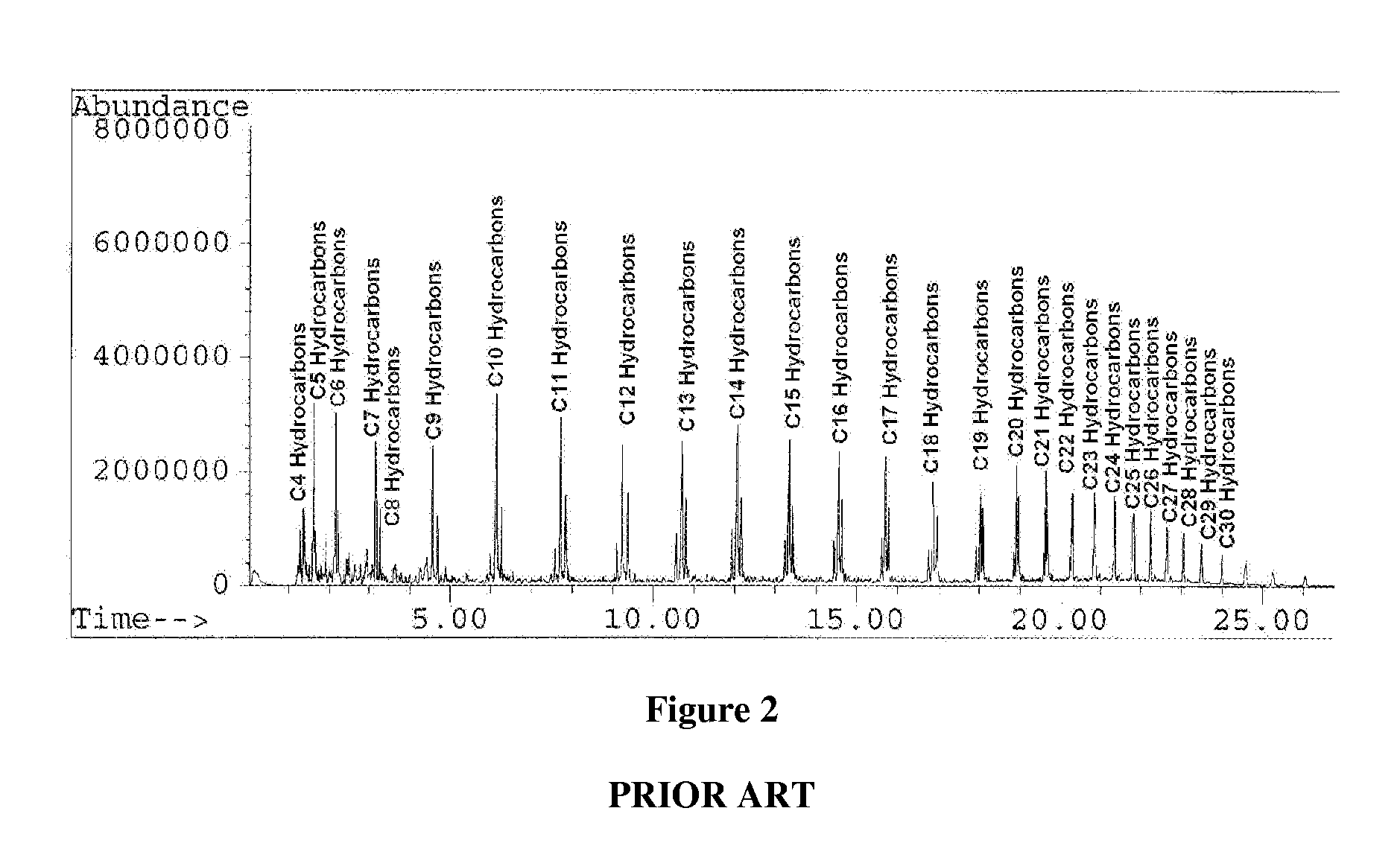Method of recycling a recyclable plastic
a technology of recycling and plastic, applied in the field of recycling a plastic, can solve the problems of not being particularly efficient in either method, the risk of environmental pollution of plastics that are not recycled and re-used, and the inability to maximize the recycling efforts of polyethylene, polypropylene and polystyrene, so as to reduce dependence, reduce the effect of reliance, and increase the recycling
- Summary
- Abstract
- Description
- Claims
- Application Information
AI Technical Summary
Benefits of technology
Problems solved by technology
Method used
Image
Examples
examples
[0060]A series of plastics (Plastics 1-3) are recycled according to the method of the present invention. Plastic 1 is 100% high density polyethylene and is decomposed in the presence of dichlorobis(2-methylindenyl)zirconium (IV) disposed on glass wool. Plastic 2 is 100% high density polyethylene and is decomposed in the presence of dichlorobis(2-methylindenyl)zirconium (IV) disposed on ammonium Y zeolite powder. Plastic 3 includes a 44:56 mixture, by weight, of high density polyethylene and polypropylene and is decomposed in the presence of dichlorobis(2-methylindenyl)zirconium (IV) disposed on ammonium Y zeolite molecular sieve beads.
[0061]The Plastics 1-3 are cut into pieces and loaded into a heated vessel in the presence of the aforementioned metallocene catalysts. The Plastics 1-3 are exposed to a constant stream of nitrogen (N2) and heated to 600° C. At approximately 450° C., a content of the hydrocarbons is collected from each of the Plastics 1-3 and analyzed via GC / MS (gas ch...
PUM
| Property | Measurement | Unit |
|---|---|---|
| temperature | aaaaa | aaaaa |
| pore size | aaaaa | aaaaa |
| temperature | aaaaa | aaaaa |
Abstract
Description
Claims
Application Information
 Login to View More
Login to View More - R&D
- Intellectual Property
- Life Sciences
- Materials
- Tech Scout
- Unparalleled Data Quality
- Higher Quality Content
- 60% Fewer Hallucinations
Browse by: Latest US Patents, China's latest patents, Technical Efficacy Thesaurus, Application Domain, Technology Topic, Popular Technical Reports.
© 2025 PatSnap. All rights reserved.Legal|Privacy policy|Modern Slavery Act Transparency Statement|Sitemap|About US| Contact US: help@patsnap.com



